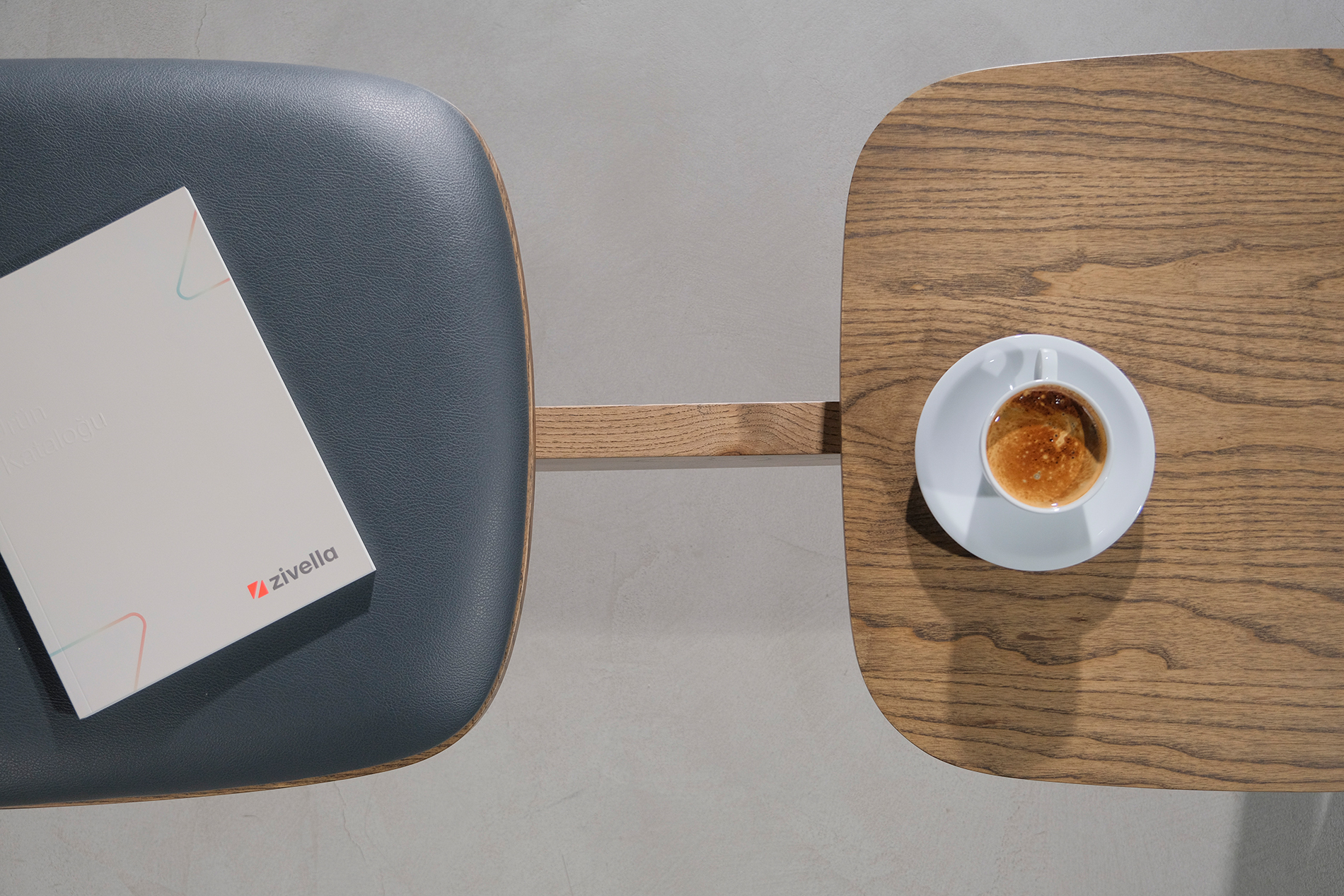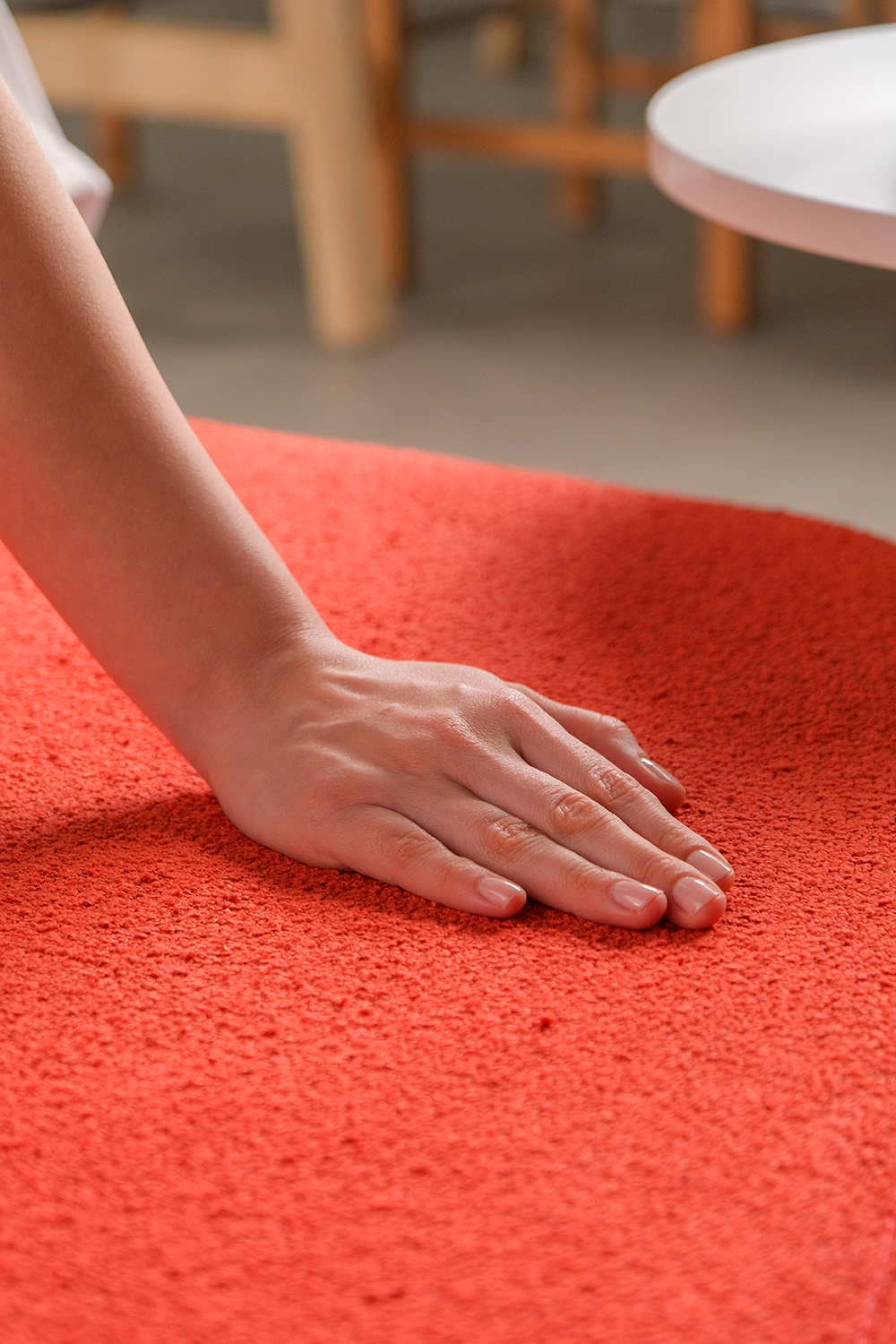Thinking Through Textures: Sensory Experience Design in New Office Trends
Thinking Through Textures:
Sensory Experience Design in New Office Trends
Office design today goes far beyond aesthetics and functionality; it is evolving toward experiences that engage the senses and foster emotional connection between people and their environments. Spaces that stimulate touch, sight, and emotional awareness are taking centre stage.
According to Gensler’s 2025 Workplace Trends Report, the concept of tactile comfort has emerged as one of the most influential factors in enhancing employee engagement and productivity worldwide.
Soft, plush materials — such as “teddy bear fabrics” — have become the most recognizable symbols of this shift. These comforting textures, combined with natural colours and organic forms, do more than create a pleasing visual effect: they strengthen the sense of belonging, calmness, and positive mood within the workspace. This new design philosophy positions offices not merely as work environments, but as multi-sensory experiences that nurture well-being.

What was once a design preference is now becoming a strategic approach — one that consciously supports employee comfort, loyalty, and creativity. Designs blending soft fabrics, warm tones, and human-centred forms make office spaces more inviting and personal.
Organic-shaped seating units covered in teddy bear-like surfaces evoke the feeling of a brief retreat into nature, while pouf-and-table combinations in waiting areas use rich, tactile fabrics such as velvet and bouclé to create both visual and physical comfort. In smaller spaces, elegant armchairs with textured upholstery establish warm, intimate atmospheres. Chairs that combine diverse materials and textiles, meanwhile, offer flexible solutions tailored to individual preferences and work habits.
This layered approach focuses not only on visual harmony but on the sensory connection between people and space. Studies show that tactile experiences enhance both engagement and productivity, transforming the office from a mere workplace into a lived experience.
Sensory Design and Motivation
A sensory-based office design—through a thoughtful combination of light, sound, and texture—positively influences attention, emotional security, and overall team atmosphere. This sense of safety and balance leads to stronger collaboration and higher efficiency. Pastel tones and nostalgic textures—evoking marshmallows or cotton candy—emerge as aesthetic elements that infuse comfort and softness into the workplace.
You and the Space
As Gensler’s analysis highlights, future offices must foster emotional as well as spatial connection. Design should deliver sensory experiences that create a genuine sense of belonging. Research on creative workplaces shows that soft materials and natural light-and-sound environments reduce time pressure and deepen employees’ emotional engagement with the space.
Biophilic and Human-Centred Design
Biophilic design—a philosophy that connects people with nature through built environments—plays a key role in this transformation. According to an article by Times Union, incorporating natural textures, organic materials, and botanical details enhances well-being, mood, and productivity. Studies suggest that these elements can have up to a 15% positive impact on health, creativity, and performance.

Scent, Touch, and Comfort
Multi-sensory design extends beyond sight: it strengthens connection through tactile and even olfactory cues, creating workplaces that truly engage the senses and nurture emotional balance.
In Conclusion
In the new generation of office design, textures and materials converge to create spaces that combine aesthetics, comfort, and a sense of belonging. This holistic approach is the key to designing calming, inspiring environments that engage the senses.
At Zivella, we integrate these contemporary trends into our collections with a philosophy that prioritizes function while embracing aesthetic harmony. In our designs, style, simplicity, and comfort come together to deliver a reliable tactile experience in every workspace.
Latest Articles
-
Human-Centred Design: Ergonomics 4.0 in Office Furniture
-
When Design Meets Fashion: The Role of Aesthetics and Style in Workspaces
-
Thinking Through Textures: Sensory Experience Design in New Office Trends
-
The Power of Modularity: Infinite Combinations, Endless Creativity
-
New Balances Between Craftsmanship and Mass Production
-
Flexibility, Sustainability, and Functionality: The Contribution of Modular Furniture to Design
-
Sustainability and Flexibility Take Center Stage in 2025 Office Design
-
2025 Office Design Trends
-
Shaping the Future with Sustainable Materials
-
The Future of Office Design: A Performance-Based Approach
-
2024 Office Furniture Trends: Innovative and Dynamic Workspaces
-
How to Design an Efficient Office
-
Office Furniture Use in the Tourism Sector
-
Furniture in Co-working Spaces is Simple, Colorful and Modern
-
New Generation Offices for Gen Y and Z
-
Office Furniture Use in the Education Sector
-
We Will Be Back to Office Despite Everything
-
Resimercial Design in Modern Workplaces
-
Ergonomics = Comfort + Ease + Efficiency
-
A Few Tips for Home Offices
-
Offices Meeting the Expectations of Generations Y and Z
-
Shape of Tomorrow
